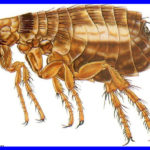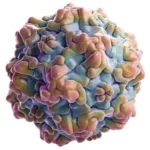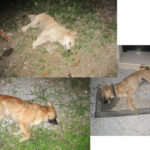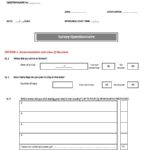What is Coccidia?
How Coccidia is transmitted
Symptoms of coccidiosis
What are the risks?
Treatment of coccidiosis?
Antibiotics
Effectiveness of Toltrazuril for Coccidiosis in Cats research article
Baycox
Treatment Chart (Baycox)
Baycox Dose Calculator
Procox
Efficacy of Procox Infection in Cats research article
How is coccidiosis prevented or controlled?
Antimicrobial Spectrum of Disinfectants
What is Coccidia?
Coccidia are small protozoans (one-celled organisms) that multiply in the intestinal tracts of cats and dogs, most commonly in kittens and puppies less than six months of age, in adult animals whose immune system is suppressed or in animals who are stressed in other ways (e.g.; change in ownership, other disease present).
In cats and dogs, most coccidia are of the genus called Isospora. I. felis and I. rivolta are the most common species found in cats. Regardless of which species is present, we generally refer to the disease as coccidiosis. As a kitten ages, he tends to develop a natural immunity to the effects of coccidia. As an adult, he may carry coccidia in his intestines, and shed the cyst in the faeces, but experience no ill effects.
Coccidia is endemic in the livestock on Crete including chickens, sheep, goats and dogs.
How Coccidia is transmitted
Kittens are not born with coccidia but after birth the kitten is frequently exposed to his mother’s faeces if the mother is shedding the infective cysts in her faeces, then the young animals will likely ingest them and coccidia will develop within their intestines. Since young kittens, usually those less than six months of age, have no immunity to coccidia, the organisms reproduce in great numbers and parasitize the young animal’s intestines.
From exposure to the onset of the illness is about 13 days. Most kittens who are ill from coccidia are, therefore, two weeks of age and older. Although most infections are the result of spread from the mother, this is not always the case. Any infected kitten or puppy is contagious to other kittens or puppies. In breeding facilities, shelters, animal hospitals, etc., it is wise to isolate those infected from those that are not.
Symptoms of coccidiosis
The primary sign of an animal suffering with coccidiosis is diarrhoea. The diarrhoea may be mild to severe depending on the level of infection. Blood and mucous may be present, especially in advanced cases. Severely affected animals may also vomit, lose their appetite, become dehydrated, and in some instances, die from the disease.
Most infected kittens are in the four to twelve week age group. The possibility of coccidiosis should always be considered when a loose stool or diarrhoea is encountered in this age group. A microscopic faecal exam by a veterinarian will detect the cysts confirming a diagnosis, this should take place before and after treatment.
What are the risks?
Although many cases are mild, it is not uncommon to see severe, bloody diarrhoea result in dehydration and even death. This is most common in animals that are ill or infected with other parasites, bacteria, or viruses. Coccidiosis is very contagious, especially among young kittens. Entire catteries may become contaminated, with kittens of many age groups simultaneously affected.
Treatment of coccidiosis?
It should be mentioned that stress plays a role in the development of coccidiosis. It is not uncommon for a seemingly healthy kitten to arrive at his new home and develop diarrhoea several days later leading to a diagnosis of coccidia. If the kitten has been at the new home for less than thirteen days, then he had coccidia before he arrived. Remember, the incubation period (from exposure to illness) is about thirteen days. If the kitten has been with his new owner several weeks, then the exposure to coccidia most likely occurred after the animal arrived at the new home.
Fortunately, coccidiosis is treatable.
Drug treatments of one to three weeks are usually required except where Procox is used.
Baycox (Toltrazuril) although unlicenced for treatment of cats eliminates coccidia within three treatment days and is available from veterinarians as a 2.5% solution. A 5% solution is available but not in Greece (it is less alkaline & thus less likely to burn the mouth or cause upset tummies). If you are using the 5% solution use half the amount shown in the treatment chart.
Cats (2.5%, 25 mg/mL):
a) For enteroepithelial cycle of toxoplasmosis (oocyst shedding):
5 – 10 mg/kg orally once daily for 2 days (Dubey and Lappin 2006)
b) For coccidiosis: 30 mg/kg orally once daily for 3 days then repeat a week later
Treatment Chart (Baycox)
Effectiveness of Toltrazuril for Coccidiosis in Cats
Tip: draw up Baycox in a syringe, then add half a ml of condensed/evaporated canned cow’s milk, this when squirted down the back of the kittens throat increases your likelihood of successful dosing!
Procox
Currently licensed for dogs only it has been shown to be effective in cats and used as a one off dose of 1-1.3ml/kg (0.9 mg emodepside + 18 mg toltrazuril per ml) it is palatable to cats (no choking, vomiting or distress) If the infection is severe, repeat after 10 days, it is essential to disinfect the environment in-between.
Efficacy of Procox Infection in Cats
How is coccidiosis prevented or controlled?
Because coccidia is spread by the faeces of carrier animals, it is very important to practice strict sanitation. All faecal material should be removed. Housing needs to be such that food and water cannot become contaminated with faeces. Clean water should be provided at all times. Most disinfectants do not work well against coccidia; incineration of the faeces, and steam cleaning, immersion in boiling water, or a 10% ammonia solution are the best methods to kill coccidia as well as household bleach (dilute 1ooml/L water). Make a fresh batch every day as it loses its potency. Coccidia can withstand freezing & will remain in the soil for many months. Anistel is a reliable disinfectant used by catteries, kennels & veterinarians (20ml/L).
Antimicrobial Spectrum of Disinfectants
The coccidia species of cats and dogs is very unlikely to infect humans.
Similar parasites include Toxoplasmosis, Cryptosporidium & Giardia (“Montezuma’s revenge” and “Delhi belly”) and are highly infectious to humans
for more information on coccidiosis (wikipedia)
References:
*Plumb’s Veterinary Drug Handbook Sixth Edition Donald C. Plumb, Pharm.D. Blackwell Publishing 2008 Adapted from an article by Race Foster, Doctor of Veterinary Medicine
Guideline for disinfectant choice in feline veterinary hospitals, shelters and cat housholds







